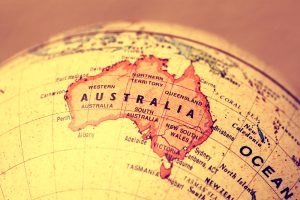Last weekend an election in Australia’s state of New South Wales (NSW) ended 12 years of the coalition government under the Liberal and National parties. Like last year’s federal election, the result more reflected a rejection of the Liberal Party rather than an explicit endorsement of the Labor Party. But as the beneficiary of the rejection, Labor now governs every state and territory jurisdiction, as well as the federal government, with the sole exception of Tasmania, a state of just 550,000 people.
What Australia may now be witnessing is the Liberal Party in terminal decline. The party is finding it difficult to connect with much of the country, and struggling to find a coherent set of ideas to stand for and explain how it wishes to positively shape the country’s future. Although there is no broad-based political movement emerging to replace it, there are a number of smaller movements that are delivering enough cuts to the party that it is slowly bleeding out.
The Liberal Party has always been a weird party, an amalgamation of ideas and interest groups that were bound together by their opposition to the Labor Party but had little else in common. Its creation in 1944 was an attempt to build a stable non-Labor force in the country that could hold power without buckling under the weight of the internal contractions that bedeviled its predecessors. With this objective, the party’s formation proved serendipitous, as the conclusion of World War II would usher in a new global order that would give it a greater sense of purpose and coherence.
The Cold War meant that liberal and conservative forces had an overarching incentive to cooperate. Western conservative parties became committed to liberal principles in response to the ideological challenge of communism. Yet since the end of that era, the loss of these broader objectives and unifying narrative has seen a great upheaval within conservative parties – most notably the Republican Party in the United States. Australia’s Liberal Party, while less dramatic in its ideological disruption, has nonetheless entered into a period of internal turbulence and a great confusion about what the party’s purpose should be.
Australians are by nature a conservative people. I mean this in the philosophical sense, rather than the political sense. Australians don’t like disturbance and disruption, and they value their social and political stability above all else. They have seen what has taken place in the United States – the radicalism and the destabilization of the Republican Party – and have noticed these traits seeping into the Liberal Party. In particular, Australians have not been swayed by the agitated and aggressive forms of politics transmitted through the Murdoch media empire, News Corp.
As a result, the Australian public has been slowly backing away from the Liberal Party. Unlike their cousins in Canada, who have a taste for murdering political parties outright, Australia is instead engaged in a gradual process of political realignment. However, the same idea that is present in Canada is emerging in Australia – that political parties serve a time-bound purpose; they do not have the right to exist in perpetuity, and if they outlive their usefulness they can be dispensed with.
What saves political parties is their ability to adapt. While the Liberal Party – like other conservative parties – may have lost its keen sense of purpose with the end of the Cold War, the aggressive forms of populism that have replaced that era’s alliance between conservative dispositions and liberal principles elsewhere in the world have only limited attraction in Australia. Getting sucked into this emotional vortex is clearly not doing the party any favors.
Realizing this will be the key to the party’s survival. As Australians value their social stability so highly, there is strong space in the political landscape for a sober and restrained form of conservatism that is focused on the fidelity of institutions, has a greater comfort with the modern world, and is concerned about the economic security of individuals and families. But embracing such an approach will mean disconnecting the party from its symbiotic relationship with the hysterics of Murdoch media.
Yet the decline of the Liberal Party may not solely be about the party itself. Over recent elections the Australian public have been consciously trying to build a new multi-party – or multi-force – political system. There has always been enough oxygen in the system for smaller parties to gain some access to the country’s various parliaments, but voting trends indicate that a system of major and minor parties is no longer what the public deems advantageous.
What is particularly notable is an emerging suspicion of political parties themselves. Alongside the wave of independents who were elected to the federal parliament in last year’s election, nine independents won seats at last week’s NSW election, an additional three from the previous parliament.
While Labor is also suffering a decline in its vote, that these independents are winning seats at the expense of the Liberal Party is an indication that many of their traditional voters no longer trust the party, and they are actively searching for new political actors who can better represent their interests.

































